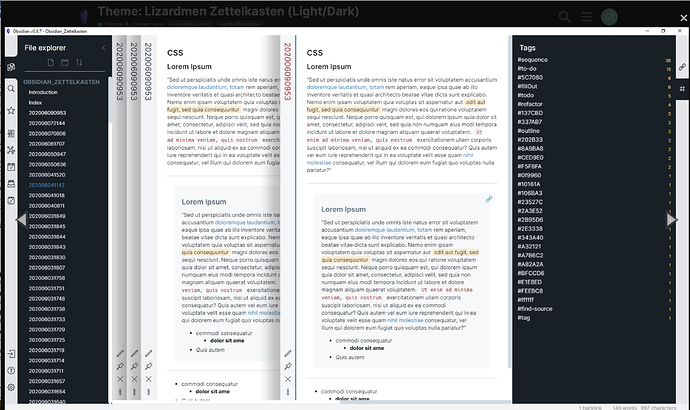I’ve been on a long journey with UiDs.
When I started using the archive, I hated them, but eventually gave in. I wanted to try the method as the creators were using it so I could fairly evaluate it.
At first I hated them, because they junk up the filename with non-readable garbage.
I saw the light when I started linking to notes from within paragraphs using only the UID in brackets. Much cleaner than including the whole filename inline.
Then I got used to them. And they represented a finishing touch. It signaled that a note had grown up into an official zettel.
Anything with another format of file name was easily identified as a raw, unprocessed note.
However, the UID-only links don’t work in other apps.
And now I’m wondering if it’s more useful to have the UID for the theoretical long term, or if it’s more useful to have a semantic for the short term, given features like the graph, and keeping some humanity in the system overall.
To @nickmilo 's point, these automatic filename fixing features might become standard in text editors moving forward. Negating the need for a UID on every file.
You could still use a UID if you didn’t have a good name for a file, but you wouldn’t need to.
Also, if there ever comes a point where an export was needed, and a unique ID was needed, I’m sure something could be scripted to make that happen by using the file’s creation date.
All of that being said. I’m at a point where I am rethinking everything.
I do like the uniformity of the file name structures. Looking at the collection of files, they look nice and orderly and polite. And I like that they separate the riff-raff from the zettels.
But I don’t want to do it unless it’s in service of real, practical, utility.
 It won’t allow you to name a file the same.
It won’t allow you to name a file the same. 
 . On my to do list is to collect a bunch of the discussions from various places on IDs, synthesize them to a degree and then think about IDs using my
. On my to do list is to collect a bunch of the discussions from various places on IDs, synthesize them to a degree and then think about IDs using my